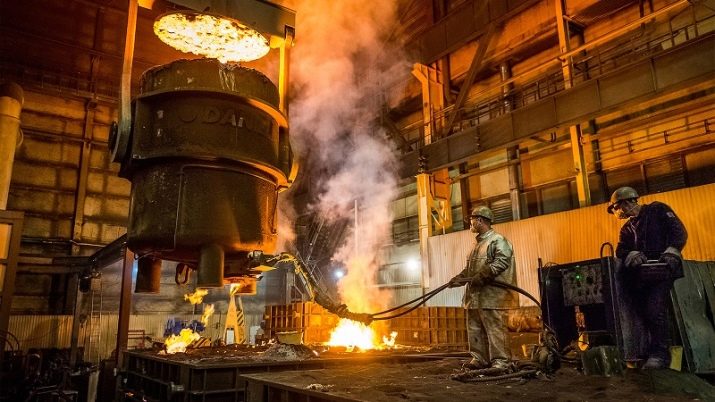Prohibited professions for women

Despite the fact that the 20th century was essentially the century of the formation of the feminist movement, which won a large number of political rights, there are still prohibited professions for women today. Restrictions in the professional sphere are most often associated with difficult working conditions.

Why are there restrictions?
In all cultures of the world, there is a traditional sexual division of labor, which protects a woman who performs the reproductive function of human reproduction in society from difficult conditions when performing certain labor operations. In the 20th century, when women in different countries eventually achieved the equalization of their political rights with men, the prohibitions on working with difficult working conditions remained.
Prohibitions appeared in the era of industrialization in Europe, when industrial production in cities began to actively develop. The enterprises most often hired men, since they were not only physically stronger, but also far superior to women in education and in the presence of special craft skills. Most of the women who traditionally take care of the family did not have the necessary work skills and had to do the lowest paid jobs. In the late 19th and early 20th centuries, suffragist movements in Europe advocated higher wages for women and safer working conditions for women.
At the stage of industrialization in many industrial industries of the late 19th - early 20th centuries, there was a lot of manual hard labor:
- in mines;
- in metallurgy
- in the mining and manufacturing industries;
- in blacksmith shops;
- in the chemical industry.

The capitalist industry's need for cheap workers' hands forced enterprise owners to resort to attracting cheap female labor for low-skilled jobs. At the same time, female labor was paid less than male labor when performing the same labor operations. Suffragettes in Europe and the United States began to actively fight to equalize women's wages and give them political rightsthat would allow not only to vote during elections, but also to receive education and master male professions, for which they paid more.
Throughout the 20th century, feminists have won from men the right to work with them on an equal footing, but despite the success of women in the struggle to defend their gender rights, in the 21st century there are still professions in which they are prohibited from working for a number of objective reasons related to the peculiarities of women. physiology and anatomy. One of the first countries where women were equal in rights with men when hiring was the USSR. In 1918, in Soviet Russia, special articles were introduced into the Labor Code, which indicated professions that did not allow the use of female labor due to conditions hazardous to health.
At the same time, all Soviet Constitutions had laws that affirmed the equal right of men and women to work. Art. 19 of the current Constitution of the Russian Federation indicates that men and women today have equal rights and opportunities for their implementation when hiring, and the Labor Code of the Russian Federation contains articles on labor protection, including labor protection for women. They list professions that are prohibited for the use of women's labor.
Legislators and labor protection in Russia are guided by the fact that by prohibiting women from working in a number of industries, they care, first of all, about maintaining women's health and preserving the possibility of becoming a mother in the future.

Who is not allowed to work in Russia?
In the USSR, a special list of professions in which women cannot work was compiled by labor protection in 1932. In 1972, it formed the basis of the basic documents of the Labor Code in the USSR. In 1978, the list was expanded to 431 professions that were officially recognized as non-female. This list remained practically unchanged even after the collapse of the USSR. New ones were added to the list of non-female professions that existed in the USSR in the Russian Federation, so by 2000 it increased to 456 positions.
In the Soviet government, measures to ban women from working in a number of industries were explained by the Decree of the Council of Ministers of the USSR and the All-Union Central Council of Trade Unions, which listed measures aimed at creating appropriate working conditions for women working in various industries. In the list that has been in force since 2000, the professions recognized as dangerous for women are divided into 38 groups, which include various specialties and types of work in agriculture, railway, sea, road transport, in the metallurgical industry, chemical production and a number of other areas of the national economy. ...
Recently, the Ministry of Labor of the Russian Federation revised the current list, removing from it a number of professions that no longer exist today, and lifting the bans on work for women from a number of specialties:
- railway driver;
- truck driver;
- captain of a sea or river vessel, etc.

Representatives of the Ministry of Labor of Russia point out that the lifting of bans on certain professions became possible due to technological progress, automation and robotization of technological cycles and industries. Now women will also be able to work in such professions due to the fact that working conditions have significantly improved, as a result of which the threats to women's health have been reduced to a minimum.
The new list will come into effect on January 1, 2021. It categorizes occupations that are harmful to women's health by industry. In general, a woman in Russia is still prohibited from working in certain production cycles in a number of industrial sectors:
- chemical;
- mountain;
- metallurgical;
- metalworking;
- when drilling wells;
- in oil and gas production;
- in ferrous and non-ferrous metallurgy;
- in the production of electronics and radio engineering;
- in the aviation industry;
- in shipbuilding;
- in the pulp and paper industry;
- in the cement industry and in the production of concrete products;
- in the printing industry.
Each group contains lists of specialties in which women cannot work due to difficult working conditions. Professions that no longer exist due to the modernization of production cycles in various industries were removed from the list.

Inaccessible professions in different countries
70 years of existence of the USSR forced many foreign countries to reconsider safety and working conditions in which women cannot work. According to modern statistics, despite the active actions of feminists in the modern world, in 104 countries there is a ban on professions and work of a certain type for women. At the same time, new restrictions do not disappear with the development of technical progress, but only add.
In 2016, World Bank experts provided information, according to which there are more than 150 countries whose legislation contains at least one law restricting a woman's right to work. Prohibitions and restrictions are associated not only with religious and cultural traditions, but also with hazardous industries in which women cannot work.
In China
In the PRC, as such, there is no prohibition on hard work for women. They are simply forbidden to study a number of industrial and other specialties:
- mining engineering;
- navigation and navigational affairs;
- blasting operations, etc.
Thanks to this, women initially cannot become potential applicants in those sectors of the economy where work is associated with increased danger and difficult working conditions.
The only legal prohibition on the profession is working in mines, where Chinese women cannot get jobs in accordance with current legislation.

In Pakistan
In this country, where many women still work in low-paying jobs, there are also restrictions on women's work, which are based on concern for women's health. For example, Pakistani law prohibits female cleaners from cleaning the floors and equipment in workshops during working hours when machines and machines are in use. Cleaning can only take place late in the evening or at night when the equipment is stopped.
In Madagascar
In this country, which is one of the poorest, there are also bans on a number of jobs for women. For example, they are prohibited from working in factories that generate electricity at night. It is also forbidden for women to participate in work related to the preparation, sorting and sale of various types of printing products. This is probably due to the fact that the printing of many publications in this country is carried out using old technologies, which provide for the use of lead.

In Argentina
In this Latin American country, there are a number of bans on women working in high-tension occupations. They cannot work in the following professions:
- train drivers;
- firefighters;
- in blasting operations;
- in production where there is work with flammable substances and corrosive metals;
- in alcohol production;
- in the glass industry;
- in production cycles where toxic substances are present;
- loaders;
- transport incandescent materials.
In many ways, such a prohibition list reflects the industrial structure of the Argentine economy, which has a large number of harmful industries and has not been modernized for a long time.
In France
In this European country, women are prohibited from working in occupations related to weight lifting. Current labor protection laws prohibit employers from using women in jobs involving lifting loads over 25 kg by hand and over 45 kg on lifts. For this reason, women in France do not work as postmen, couriers or loaders. In this country, which is considered the birthplace of the suffragette movement, it is difficult for a woman to get a job in a purely male profession. So, when hiring a gardener, driver or car mechanic, a woman is denied here 22% more often than a man.
In general, it can be seen that the prohibitions on the profession are associated primarily with the physiological aspect. Women, by their very nature, cannot perform a number of heavy physical work associated with lifting weights. Prohibitions also apply to working conditions that negatively affect the reproductive system of the female body in the future and may lead to infertility.
The abolition of bans on a number of professions for women, which occurred in Russia, is explained by the improvement of working conditions, which reduce the risks to women's health to a minimum.









